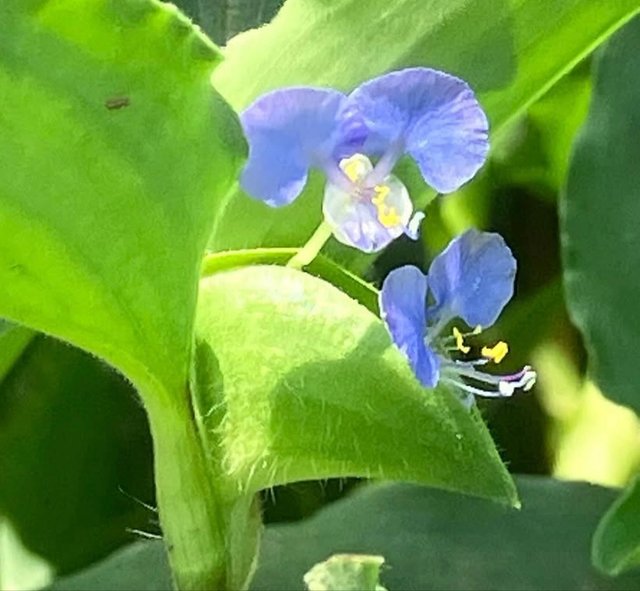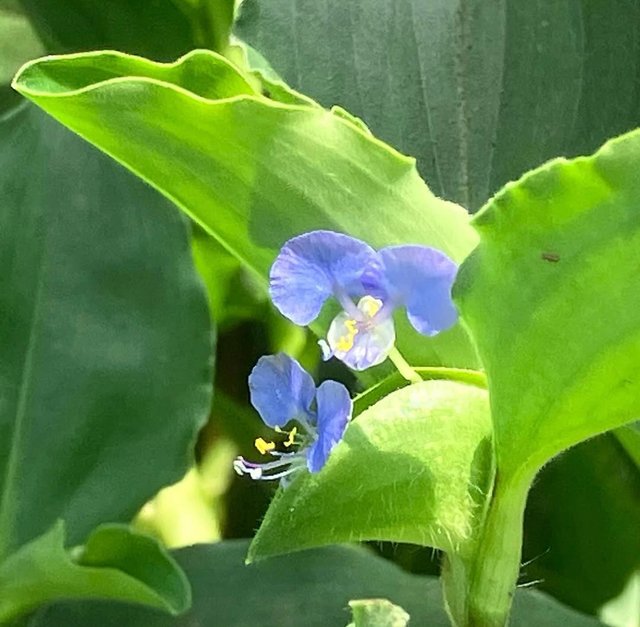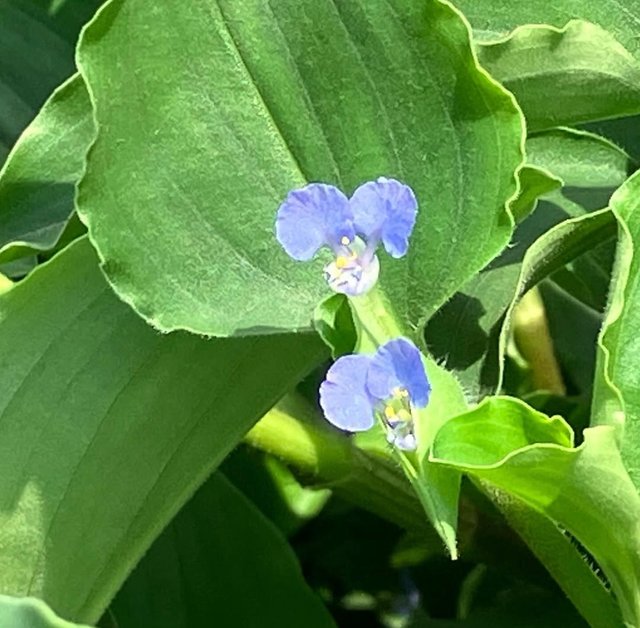Asiatic dayflower
Asiatic dayflower is a fast-growing herbaceous plant belonging to the Commelinaceae family it is native to East Asia including China Japan and Korea but has spread to many parts of the world where it is often found growing in moist soil along roadsides in gardens fields and forest edges the plant is easily recognized by its distinctive flowers which have two large vivid blue petals and one smaller whitish petal giving it a unique three-petaled appearance the flowers usually bloom early in the morning and fade by midday.
Which is why it is called a dayflower the plant has slender trailing stems that can root at the nodes making it a vigorous spreader it typically reaches heights of 20 to 60 centimeters with lance-shaped alternate leaves that sheath the stem the Asiatic dayflower prefers partial shade to full sun and thrives in moist but well-drained soils although it is often regarded as a weed in many areas due to its rapid growth and tendency to dominate garden beds and agricultural spaces it also has cultural medicinal and ecological significance in traditional Chinese medicine the plant has been used for its cooling.
And detoxifying properties it has been applied as a treatment for sore throats fever and urinary infections and in some regions the juice from the crushed plant is used to soothe inflammation or applied to insect bites in Japan the blue pigment from the petals has historically been used in painting and dyeing especially in woodblock printing before modern synthetic dyes became common the pigment known as commelinin produces a brilliant blue color but is delicate and not very lightfast which limited its long-term use ecologically Asiatic dayflower is valuable as a nectar source for pollinators such as bees and butterflies.




